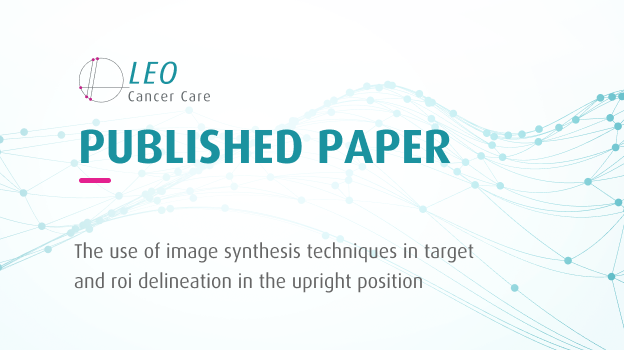In a newly-published paper, scientists propose synthetic MRI and CT images as an innovative solution for the delivery of upright cancer care.
Researchers are proposing an innovative approach using synthetic CT and MRI images to enable multi-modality images for delivery of radiation therapy to patients in an upright position.
The benefits of patients receiving radiotherapy in an upright position are increasingly being recognized.
Currently, to facilitate upright radiotherapy treatments, a CT scan of the patient must be acquired in an upright position. Once obtained via an upright CT scanner, a patient positioner places the individual upright in front of the radiation therapy beam for treatment.
However, with fewer than 200 upright MRI scanners globally, advances towards delivering therapy to patients in an upright position and utilizing MRI for imaging purposes are being hampered.
Multi-modality imaging is an essential element of modern radiotherapy planning to accurately visualize tumors and other anatomy.
And now, newly-published paper proposes a solution that could incorporate MRI more widely into the ‘upright’ planning and treatment process.
Researchers led by Dr Niek Schreuder suggest that a supine MRI could be deformed into the upright CT geometry by means of calculating either a synthetic upright MRI or CT that can be used in upright treatment planning and delivery and harnessing the benefits of supine MRI systems.
In their paper, “The use of image synthesis techniques in target and roi delineation in the upright position” Schreuder and his team argue that treatment in the upright position can be advanced by resolving the limitations of currently only having access to upright CT scanners, even when other imaging modalities are vital for treatment planning.
Existing upright MRI scanners are limited to smaller magnetic field strengths, typically below 0.6 Tesla (T), whilst modern supine MRI scanners provide a field strength of 3T and are often preferred by diagnostic radiologists and oncologists to determine the exact location and shape of treatment targets and regions of interest (ROIs).
However, researchers acknowledge that inter-modality image registrations – e.g. between an upright CT image and a supine MRI image or vice vera – are still not straightforward as most structures and organs will change shape and position when moving between an upright and recumbent position.
Intra-modality registration – i.e. CT to CT or MRI to MRI – are much easier and more reliable, say the researchers.
“This needs to be addressed when undertaking image registration,” stated Schreuder, who has identified two specific approaches to address the challenge.
The team underlined the benefits of intra-modality registration using Artificial Intelligence (AI) to generate a synthetic image for the missing modality.
The two proposed methods both involve acquiring an upright CT scan and a supine MRI scan and combining them within the radiotherapy planning system for target delineation and treatment planning for upright treatment.
Under proposal A, the team say creating a synthetic upright MRI scan from the upright CT images places all the organs in the upright orientation, position, and size.
The process then involves deforming the acquired supine MRI to the synthetic upright MRI using intra-modality fusion techniques that allow for sending the deformed supine MRI scan to the radiotherapy planning system together with the acquired upright CT data.
Method B, which also uses Artificial Intelligence (AI), proposes the creation of synthetic supine CT images from the supine MRI data and then deforming the synthetic supine CT to the acquired upright CT images using intra-modality fusion techniques. The obtained deformation matrix are then applied to the supine MRI images deforming them into the same geometric space as the upright CT images.
For both methods, the deformed MRI data and the upright CT data are then sent to the radiotherapy planning system for target delineation and planning for upright treatment. Both methods therefore fully support target delineation and treatment planning for upright treatment.
The paper states: “Calculating synthetic images provides a solution to this problem following one of two possible approaches: (Method A) calculating synthetic upright MRI images from the upright CT scans or (Method B) calculating synthetic supine CT images from the supine diagnostic MRI images.”
Schreuder, who is Chief Scientific Officer for Leo Cancer Care – which manufactures upright radiotherapy solutions – said: “Both approaches successfully solve the lack of high magnetic field MRI imaging in the upright position, allowing for more comprehensive upright radiotherapy planning.”
Please note: The Leo Cancer Care technology is not yet commercially available and will not treat patients until the required regulatory approval has been achieved.
Subscribe to our newsletter
STAY CONNECTED
Get the latest updates and exclusive offers delivered straight to your inbox
Subscribe